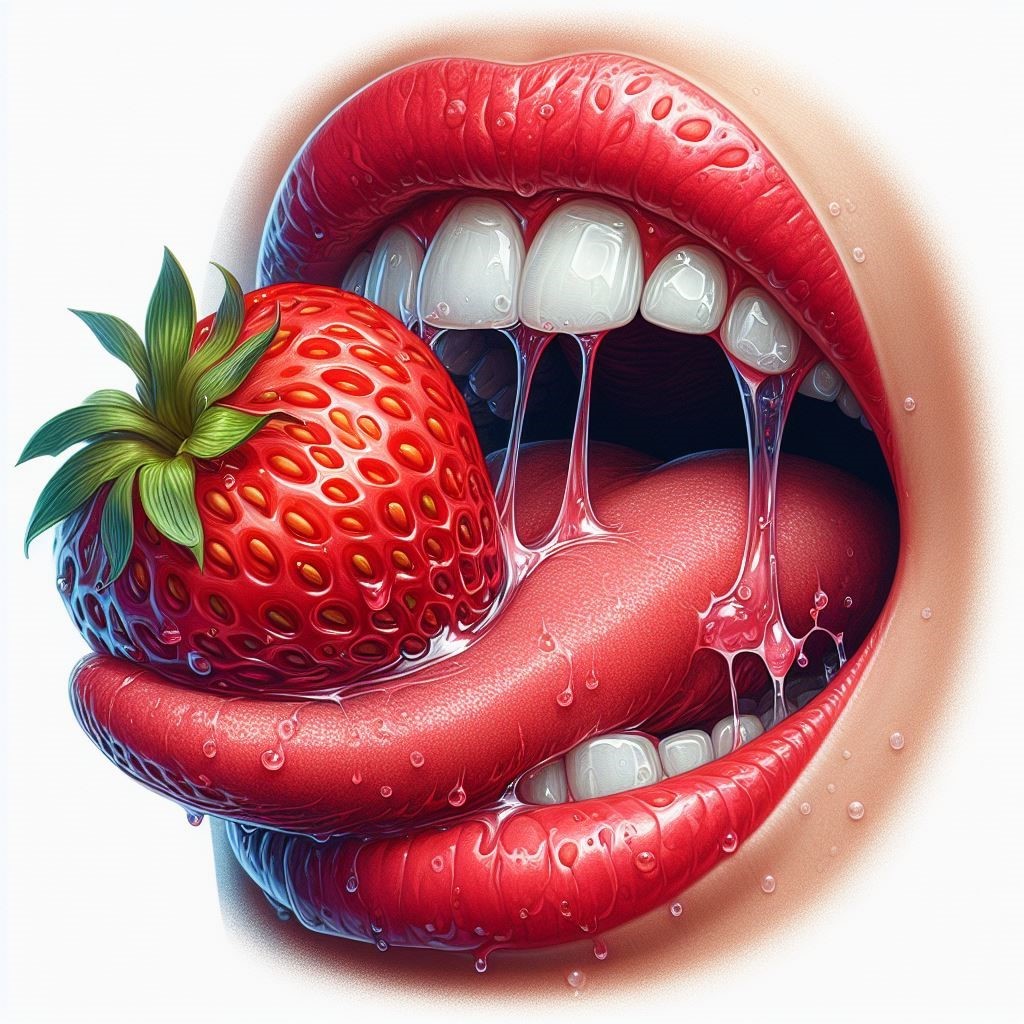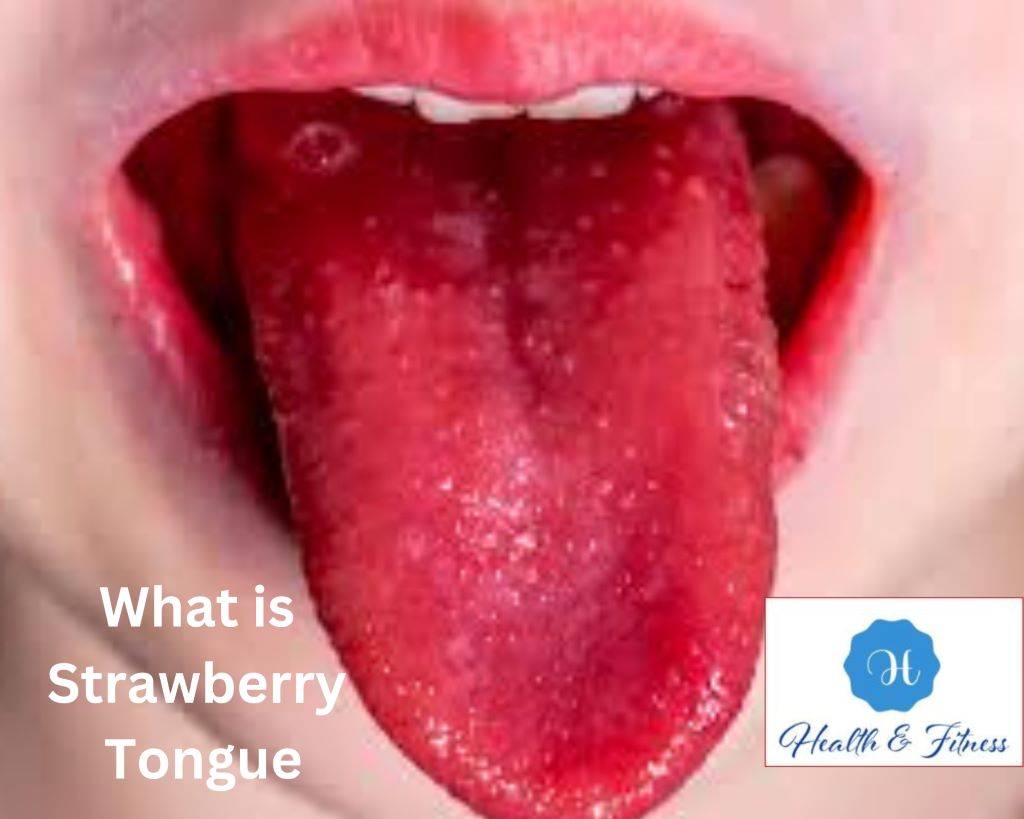What is Strawberry Tongue: From Causes to Treatment
Unveiling the Mysteries of Strawberry Tongue and its Journey from Causes to Effective Treatment
What is Strawberry Tongue? Explore its causes and treatment options in our comprehensive guide. Get the answers you need
Introduction to What is Strawberry Tongue

Welcome to the fascinating world of oral health! In this comprehensive guide, we embark on a journey to unravel the secrets behind a peculiar and intriguing condition known as strawberry tongue. Have you ever wondered why some tongues resemble a luscious strawberry’s vibrant red hue and bumpy texture? Well, you’re about to find out! Join us as we delve deep into the causes, symptoms, diagnosis, treatment options, preventive measures, and everything you need to know about this remarkable tongue anomaly
at the end of this blog post, we will learn about What is Strawberry Tongue and how to treat it.
Understanding Strawberry Tongue
Picture a strawberry in your mind: its vivid red color, its tantalizing texture. Now, imagine encountering the same characteristics on a tongue. That’s precisely what strawberry tongue looks like—a tongue adorned with a rich red hue and a bumpy, textured surface. While most tongues boast a healthy pinkish shade, strawberry tongue presents a distinctive appearance that immediately catches one’s attention. Let’s explore this fascinating phenomenon further. The strawberry tongue is a condition that primarily affects the appearance of the tongue, giving it a remarkable resemblance to a strawberry. While it may sound alarming, it’s essential to understand the underlying causes, associated symptoms, and available treatment options.
Pictures of strawberry tongue

Imagine encountering a tongue that instantly catches your attention with its vivid redness and textured surface. That’s precisely what strawberry tongue looks like. The name itself evokes images of the delectable fruit, and the resemblance is truly remarkable. But what lies behind this unique transformation of the tongue’s appearance? Let’s dive deeper into the intricacies of the strawberry tongue.
Causes of strawberry tongue
What is Strawberry Tongue?
What brings about this remarkable transformation in the color and texture of a tongue? Let’s dive deep into the various factors that can contribute to the occurrence of the strawberry tongue. By understanding the causes, we can gain valuable insights into effectively managing this condition and preventing its recurrence.
Scarlet Fever and Strep Throat:
Streptococcal infections, such as scarlet fever and strep throat, have been strongly associated with the development of the strawberry tongue. These infections can trigger an inflammatory response, resulting in characteristic redness and swelling.
Centres for Disease Control and Prevention. (2021). Group A Streptococcal (GAS) Disease. CDC. Link
Kawasaki Disease:
Kawasaki disease, a rare condition primarily affecting children, manifests in various symptoms, including strawberry tongue. As an inflammatory disease, it affects the tongue and poses potential risks if left untreated.
Mayo Clinic Staff. (2021). Kawasaki Disease. Mayo Clinic. Link
Toxic Shock Syndrome (TSS):
While rare, toxic shock syndrome can also give rise to the strawberry tongue. This severe condition, often associated with certain bacterial infections, prompts an immune response that affects the tongue’s appearance.
Vitamin Deficiencies: In some cases, deficiencies in specific vitamins, such as vitamin B12 and vitamin C, can contribute to the occurrence of strawberry tongue. Adequate nutrition plays a crucial role in maintaining tongue health.
Allergic Reactions:
Allergies, whether triggered by food, medication, or other substances, can cause tongue inflammation and give rise to the distinctive appearance of the strawberry tongue.
Decoding Symptoms and Identifying Complications
Recognizing the symptoms associated with the strawberry tongue is vital for early diagnosis and effective treatment. In this chapter, we’ll explore the signs to look out for and the potential complications that may arise if the condition is left unaddressed.
Symptoms:
Apart from the visible redness and textured surface, the strawberry tongue can be accompanied by symptoms like tongue swelling, discomfort, and an altered sense of taste. Other associated symptoms may vary depending on the underlying cause.
Complications:
While strawberry tongue itself may not pose significant risks, it often indicates an underlying condition that requires attention. Ignoring these conditions could lead to potential complications, ranging from respiratory and cardiovascular problems. It’s crucial to understand these risks and seek timely medical intervention.
Seeking Answers through Diagnosis
Proper diagnosis plays a crucial role in determining the underlying cause of the strawberry tongue and guiding the appropriate treatment approach. Let’s explore the diagnostic methods and medical assessments used to identify the root cause of this captivating tongue condition.
Medical History and Physical Examination:
Your healthcare provider will carefully review your medical history, asking specific questions about symptoms, recent illnesses, and potential exposures. They will also conduct a thorough physical examination, focusing on the appearance of your tongue and any associated symptoms.
Laboratory Tests:
To pinpoint the cause, your healthcare provider may order various laboratory tests, including throat swabs, blood tests, and allergy tests. These tests help identify bacterial or viral infections, assess inflammatory markers, and rule out other potential causes.
Specialized Assessments:
Depending on the suspected cause, additional assessments, such as echocardiograms for Kawasaki disease or skin biopsies for certain conditions, may be necessary to reach a conclusive diagnosis.
Strawberry tongue treatment

What is strawberry tongue, and how do you treat it?
Now that we understand the causes and have undergone the diagnostic process, it’s time to explore the treatment options available for the strawberry tongue. The approach to treatment primarily focuses on addressing the underlying cause, alleviating symptoms, and promoting overall oral health. Let’s delve into the various treatment modalities and symptom management techniques.
- Targeting the Underlying Cause: Based on the identified cause, healthcare professionals will devise a treatment plan to address the root issue. This may involve antibiotics for bacterial infections, anti-inflammatory medications for certain conditions, or other appropriate interventions.
- Managing Symptoms: Alongside treating the underlying cause, symptom management plays a vital role in enhancing comfort and promoting healing. Supportive measures like maintaining good oral hygiene, consuming a balanced diet, and staying hydrated can aid in recovery.
Prevention and Lifestyle Measures
Prevention is always better than cure. Discover the proactive steps you can take to minimize the risk of developing strawberry tongue:
Oral Hygiene:
Maintaining good oral hygiene through regular brushing and flossing helps reduce the chances of bacterial or fungal infections that may contribute to tongue abnormalities.
Balanced Diet:
A well-balanced diet rich in essential nutrients, including vitamins and minerals, promotes tongue health and strengthens the immune system.
Preventive Measures:
Avoid sharing personal items, such as utensils, with individuals with contagious conditions like strep throat. This minimizes the risk of exposure to bacteria and viruses.
Regular Check-ups:
Periodic dental and medical check-ups enable early detection of potential issues, allowing for prompt intervention and treatment.
When to Seek Medical Help
Knowing when to seek medical attention is vital for your well-being. Here are some indicators that it’s time to consult a healthcare professional:
- Persistent or worsening symptoms, despite home remedies or over-the-counter treatments.
- Presence of severe symptoms, such as difficulty swallowing or breathing.
- If you have pre-existing medical conditions or are undergoing treatment, it’s essential to inform your healthcare provider to ensure appropriate care.
Conclusion about What is Strawberry Tongue
Congratulations! You’ve successfully embarked on a journey that has unravelled the mysteries of the strawberry tongue. With knowledge about its causes, symptoms, and treatment options, you can now confidently approach this unique tongue condition and seek timely medical intervention when necessary. Remember, your oral health plays a significant role in your overall well-being, so cherish your tongue and give it the care it deserves!
FAQ about What is the strawberry tongue?
Q1: What is Strawberry Tongue?
A strawberry tongue refers to a specific appearance of the tongue that resembles a ripe strawberry. It is characterized by a bright red or inflamed tongue with small, swollen taste buds that give it a bumpy texture. The term is often used in the context of certain medical conditions and is considered a symptom rather than a standalone illness.
Q2: Is a strawberry tongue normal?
No, a strawberry tongue is not normal in the sense that a healthy tongue typically does not have this appearance. It is usually associated with underlying medical conditions, and if you or someone you know has a strawberry tongue, it’s important to consult a healthcare professional for a proper evaluation.
Q3: Is strawberry tongue seen in vitamin deficiency?
Yes, a strawberry tongue can sometimes be associated with vitamin deficiencies, particularly a deficiency in vitamin B3 (niacin) or vitamin B2 (riboflavin). When the body lacks these essential nutrients, it can lead to changes in the tongue’s appearance and color. However, there can be other causes of a strawberry tongue, so it’s essential to consult a doctor to determine the underlying cause.
Q4: What causes strawberry tongue in scarlet fever?
Strawberry tongue is often observed in individuals with scarlet fever, which is a bacterial infection caused by Group A Streptococcus bacteria. In scarlet fever, toxins produced by the bacteria can cause inflammation and swelling of the tongue’s papillae (small bumps on the tongue), giving it a characteristic red and bumpy appearance.
Q5: What are the symptoms of strawberry tongue fever?
Strawberry tongue is one of the symptoms associated with scarlet fever. Other common symptoms of scarlet fever may include a high fever, a red rash that feels like sandpaper, sore throat, difficulty swallowing, and swollen lymph nodes. If you suspect scarlet fever, it’s crucial to seek medical attention promptly as this condition requires antibiotics for treatment.



